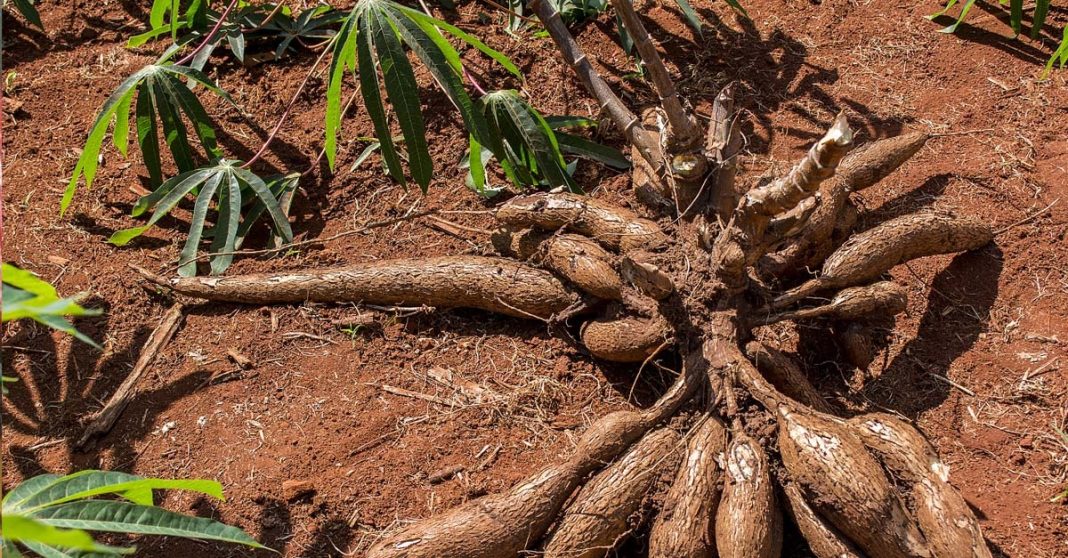Cassava’s lucrative short-term benefits as Laos’ major agricultural export mask the devastating consequences of extensive slash-and-burn practices, putting the country’s long-term ecological stability in jeopardy.
Cassava has experienced a surge in demand this year, solidifying its position as the country’s most profitable crop. In the first five months of this year alone, the export value of cassava products exceeded USD 408 million, according to one National Assembly member, reinforcing its economic significance.
Minister of Planning and Investment, Mr. Khamjane Vongphosy, told National Assembly members in a recent session that China, Vietnam, and Italy serve as the primary markets for cassava, where it is used for the production of MSG, flours, and other products.
Consequently, a significant number of Lao farmers have transitioned from rice and rubber farming to wholly commercial cassava production. But while Laos holds the potential to become a major cassava producer, there are growing concerns regarding the environmental consequences associated with cassava cultivation.
The cultivation of cassava, driven by rising demand and its economic potential, has resulted in the clearance of large swathes of forest. These practices not only lead to the loss of valuable forest ecosystems but also contribute to increased carbon emissions, air pollution, and the risk of forest fires, posing significant challenges for sustainable agriculture and conservation efforts in the country.
The problematic nature of cassava cultivation came to a head earlier this year, when widespread burning to clear land for cassava plantations caused a massive haze of toxic smoke to cover the skies in many provinces of Laos, affecting the health of residents and negatively impacting tourism.
And despite the potential for profitability, many cassava farmers face challenges that hinder their chances of maximizing profits, primarily due to limited knowledge of modern cultivation methods. Additionally, a considerable portion of the crop is grown by foreign companies, reaping financial benefits at the expense of local farmers.
Last year, Laos earned USD 1,733 million from agricultural exports, and this year’s expectations hover around USD 2 billion, according to a report by Vientiane Times. The export value of agricultural produce in the first five months of this year reached USD 901 million, accounting for 75.14 percent of the 2023 target, with key export crops including cassava, coffee, bananas, maize, and sugarcane.
To reduce import dependence and enhance export potential, the government is now actively promoting the cultivation of additional crops for domestic market supply and is hoping to boost exports. This effort has involved the establishment of more farmers’ groups and cooperatives, with nearly 4,200 farmers’ groups and 27 cooperatives currently in operation. Additionally, new markets are being sought to diversify export opportunities.
The government has also allocated priority agricultural areas along the Laos-China Railway in six provinces in a bid to mitigate food security issues. However, agriculture officials emphasize that farmers must adopt modern cultivation techniques to achieve higher yields and reduce the need for imported fruits and vegetables.
But some experts have warned that a potential crash in cassava prices caused by oversupply poses significant risks to the Lao economy and the livelihoods of farmers who have transitioned to cassava cultivation from rubber or other crops.
“If cassava prices were to plummet or there was an oversupply in the market, it could lead to reduced income for farmers and negatively impact their profitability,” one economist who asked not to be named told the Laotian Times.
“This would especially affect those who solely rely on cassava as their primary source of income. Farmers who have made the switch from rubber or other products to cassava may find themselves vulnerable to market fluctuations and price volatility,” he said.
The Lao economy could also face adverse consequences. A sharp decline in cassava prices could result in a decline in agricultural exports and a loss of foreign exchange earnings for the country. Additionally, oversupply might lead to stockpiling of cassava with limited demand, causing financial strain on farmers, storage capacity issues, and potential wastage of the crop.
To mitigate these risks, it is crucial for the Lao government and relevant stakeholders to promote diversification within the agricultural sector, encourage the adoption of sustainable farming practices, and provide support and resources to farmers to adapt to changing market conditions.



